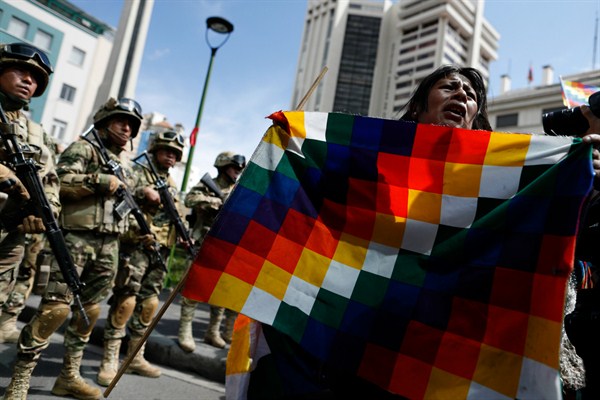LA PAZ, Bolivia—Since the head of Bolivia’s armed forces “suggested” to Evo Morales that he resign the presidency on Nov. 10, following contested elections in October that were marred by allegations of fraud, Bolivia has been in a tense limbo. Two days after the military’s nudge, Morales arrived in Mexico, where authorities had granted him political asylum. In La Paz, the conservative vice president of the Senate, Jeanine Anez, declared herself his replacement.
Street clashes and crackdowns on protesters have escalated since then. Can the new government, which insists it is only transitional while acting otherwise, establish its legitimacy and reduce the risk of deeper unrest?
So far, the signs are ominous. In the latest violence this week, police and the military attacked demonstrators blocking access to a gas distribution plant in El Alto, Bolivia’s second-largest city, leaving five protesters dead and 30 wounded. That followed a confrontation between indigenous demonstrators and security forces in Sacaba, just outside the city of Cochabamba, that killed nine coca growers and injured at least 122 other people on Nov. 15.

